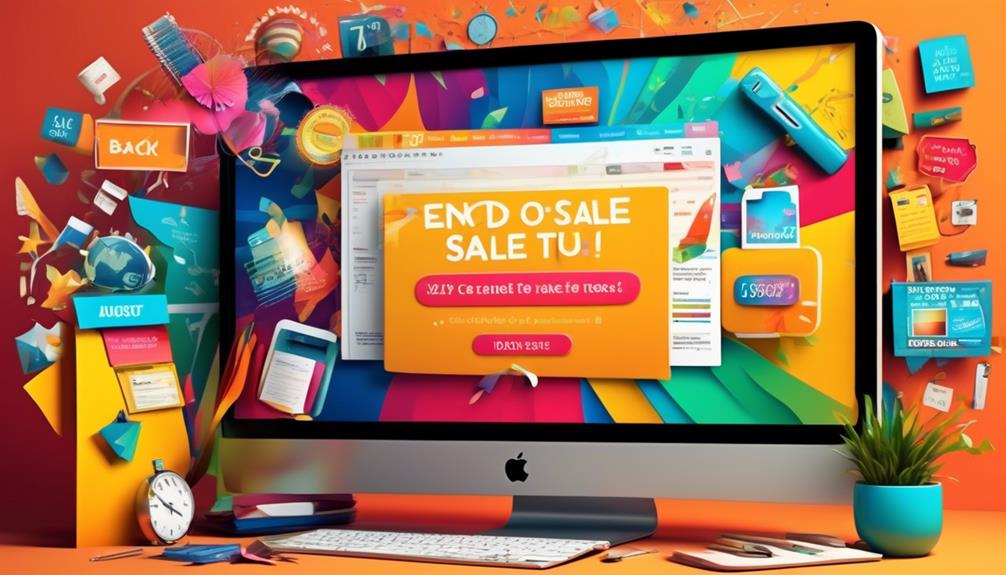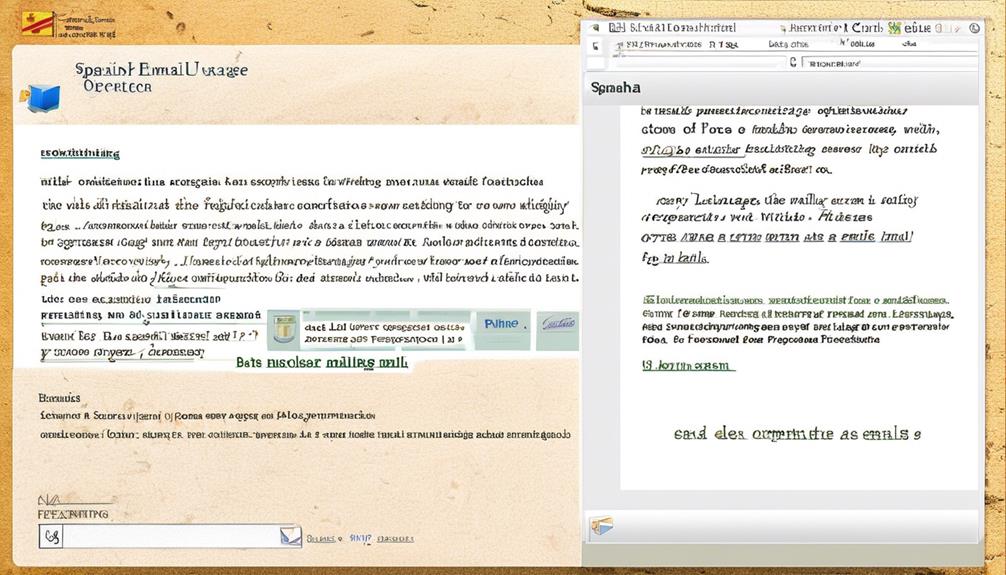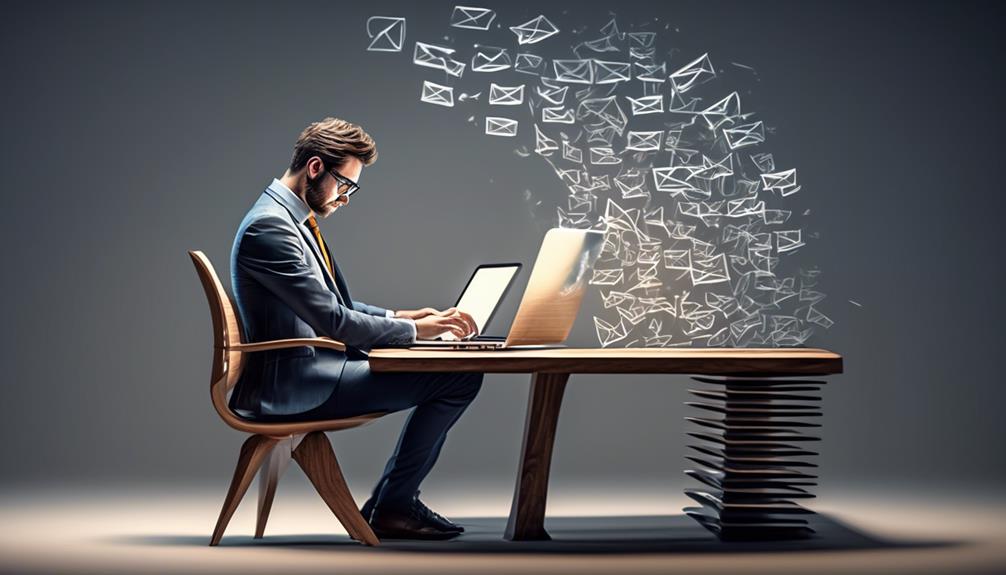Following your visit to a career fair, the subsequent actions you take are critical in creating a memorable impact and possibly locking in job prospects. We’re all familiar with the mix of excitement and anxiety that follows encounters with potential employers or connections at a career fair. The steps you take afterward can hold just as much significance as your first meeting.
The follow-up email is our chance to solidify the connection and demonstrate our professionalism, but how do we ensure it's impactful and effective? Let's explore the key elements of crafting a compelling follow-up email that will leave a lasting impression and increase our chances of furthering our career prospects.
Key Takeaways
- Sending a follow-up email after a career fair is crucial for making a lasting impression on potential employers.
- Crafting a well-structured email with a compelling subject line shows that you're proactive and sincere in your interest.
- Highlight key takeaways from interactions to personalize the email and make a lasting impression.
- Using email templates as a starting point can help tailor the content to reflect your personal connection with the company and recruiters.
Importance of Follow-Up Emails
We strongly believe that sending a follow-up email after a career fair is crucial to making a lasting impression on potential employers. At a career fair, where numerous job seekers are vying for attention, it's essential to differentiate yourself from other candidates. By promptly sending a follow-up email, you demonstrate your professionalism and interest in the company. This action not only helps you get noticed by recruiters but also increases your chances of standing out from the competition.
Crafting a well-structured email with a compelling subject line is an opportunity to show hiring managers that you're proactive and sincere in your interest in the job and the company.
When crafting your follow-up email, consider using email templates as a starting point. Tailor the template to reflect your personal connection with the company and the recruiters you met at the career fair. Personalizing the content of the email will demonstrate your genuine interest in the job and the company. This individualized approach will make you more memorable and help create a positive impression on the recruiters.
Crafting a Professional Subject Line
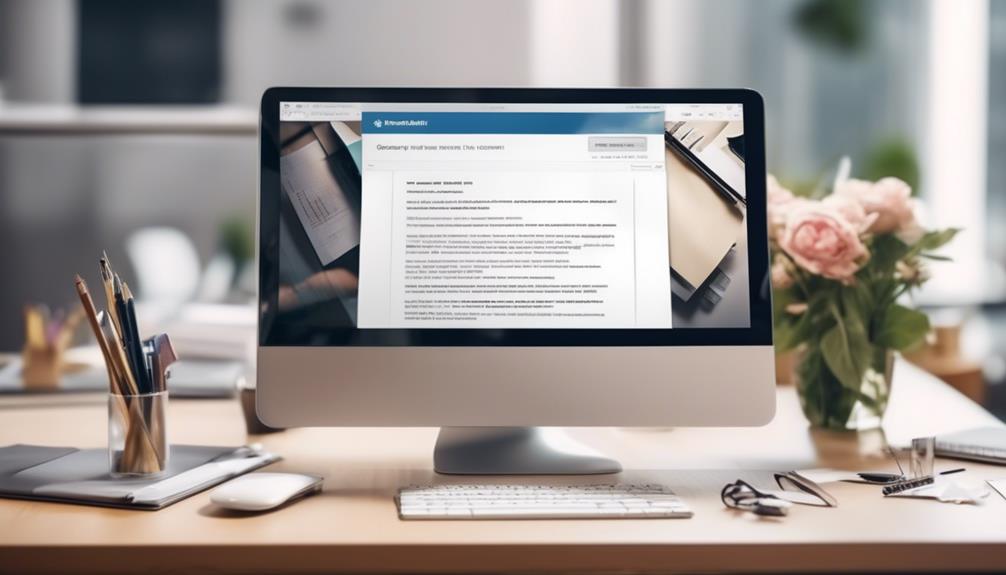
After recognizing the significance of follow-up emails in making a favorable impression post-career fair, it's crucial to understand the key elements of crafting a professional subject line for these communications.
Crafting a professional subject line for follow-up emails after a career fair is essential for making a lasting impression on potential employers. Here are some key elements to consider when crafting a professional subject line:
- Keep it concise and to the point, using no more than five words.
- Mention the event or location in the subject line to provide context for the recipient.
- Clearly establish that it's a follow-up email to indicate the purpose of the communication.
Crafting a professional subject line is crucial in capturing the attention of companies and recruiters. For instance, using subject lines like 'Career Fair Opportunity with [Company Name]' or 'Thanks for the conversation at [Career Fair Name]' can help in making the purpose of the email clear.
Writing a Brief and Impactful Body
Upon concluding the career fair, it's essential to craft a brief and impactful email body that conveys gratitude, highlights qualifications, and expresses genuine interest in potential opportunities.
When writing the body of your follow-up email, it's crucial to keep it concise and impactful. Use clear and concise language to express your appreciation for the opportunity to connect at the career fair.
Highlight key takeaways from your interactions, such as specific discussions or insights gained, to personalize the email and make a lasting impression. Focus on aligning your skills and experiences with the company's needs, demonstrating how you can contribute to their goals.
Keep the body of the email focused on the value you can bring to the company and your enthusiasm for potential opportunities. Remember to end the email with a polite and professional closing to leave a positive impression on the recruiter.
Expressing Gratitude in Your Email
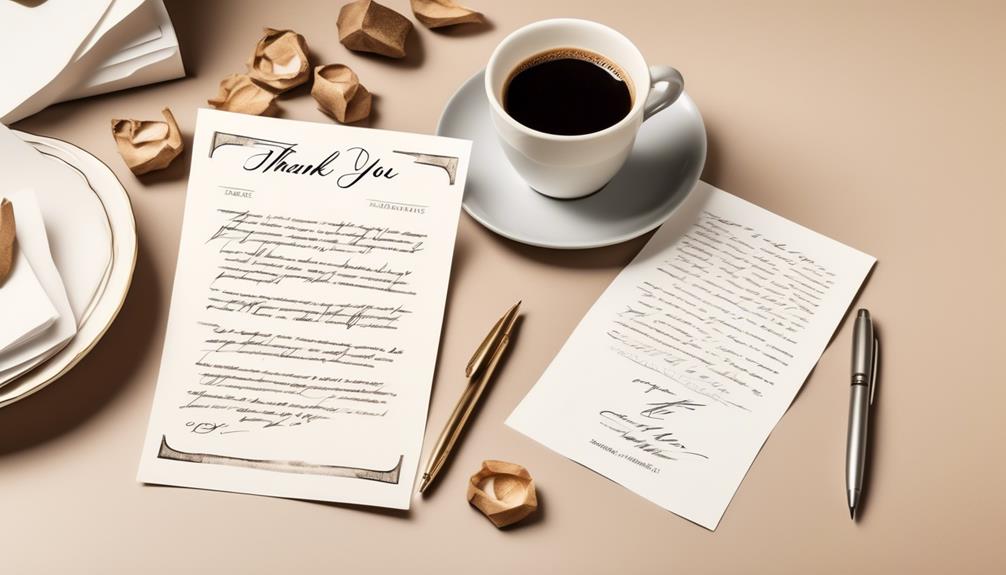
Starting your follow-up email with a heartfelt expression of gratitude for the recruiter's time and consideration is essential in creating a positive and professional impression. Expressing genuine thanks demonstrates your courteous and professional tone, leaving a lasting impact.
When crafting your email, consider the following:
- Sincere Thank You: Open the email with a genuine expression of gratitude for the recruiter's time and attention during the career fair. This sets a positive tone for the rest of the message.
- Appreciation for Opportunities: Express your appreciation for the opportunity to connect with the recruiter and discuss potential career prospects. This shows your enthusiasm and interest in the opportunities presented.
- Polite and Appreciative Language: Throughout the email, maintain a courteous and appreciative tone. Use polite language to convey genuine gratitude, reflecting your professionalism and respect.
Using Effective Email Templates
We can enhance our post-career fair correspondence by incorporating effective email templates that convey professionalism and enthusiasm. When attending career fairs, a follow-up email is crucial to maintaining the connection established during the event. Utilizing a well-structured email template can significantly improve the likelihood of making a positive impression.
Start with a courteous and professional tone, addressing the recruiter formally. Express gratitude for the opportunity to connect at the career fair, and highlight your interest in the company and any open roles or internships discussed. It's essential to keep the email concise and to the point, while also demonstrating your enthusiasm for the potential opportunity.
The subject line should be attention-grabbing, and the body of the email should begin with a warm greeting. Mentioning a memorable detail from your conversation at the job fair location can help personalize the email. Conclude by explaining why you're a good fit for the company and demonstrating your eagerness to further discuss potential opportunities.
Using effective email templates can streamline the process of reaching out to recruiters and increase the chances of leaving a lasting impression.
Frequently Asked Questions
How Do You Write a Follow up Message After a Career Fair?
We write a follow-up message after a career fair by expressing gratitude and mentioning a personal connection. It's essential to send it within 24 hours to stay top-of-mind. We should use a structured template with a proper introduction and a professional tone. This helps differentiate ourselves, stand out, and show professionalism and interest. By doing so, we increase our chances of getting noticed.
Should You Follow up After a Career Fair?
Yes, following up after a career fair is crucial. It shows initiative and keeps you on the employer's radar.
It's an excellent opportunity to express gratitude, reiterate your interest, and inquire about next steps. By following up promptly, you demonstrate professionalism and enthusiasm for the opportunity.
In a competitive job market, this simple gesture can set you apart from other candidates and potentially lead to further conversations or interviews.
What Should the Subject Line Be for a Follow up Email After a Job Fair?
The subject line for a follow-up email after a job fair should be concise and specific, grabbing the recipient's attention.
We've found that including the event name and a memorable detail works well.
For example, 'Great Meeting You at [Event Name] – Let's Discuss [Specific Topic].'
This approach personalizes the email and increases the likelihood of it being opened and read.
How Do I Follow up After a Career Fair on Linkedin?
After a career fair, we follow up on LinkedIn by connecting with the recruiters we met and sending a personalized message expressing gratitude for the interaction.
We can reference our meeting at the fair, express interest in the company, and suggest a follow-up conversation.
It's essential to maintain a professional tone and use proper etiquette when reaching out on LinkedIn to leave a positive impression.
Conclusion
In conclusion, it's crucial to follow up after a career fair to make a lasting impression. Crafting a professional and impactful email with a personalized touch can set you apart from the crowd.
Remember, 'The fortune is in the follow-up.'
I look forward to connecting further and exploring potential opportunities.
Thank you for your time and consideration.

